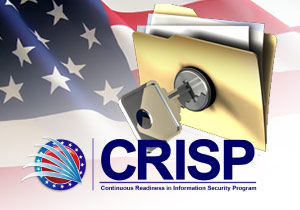Project Description
In 2018, KRM Associates (KRM) joined Cerner, a global leader in health care technology, and other industry leaders and innovators to help make seamless care available to the nation’s veterans. This team has worked diligently to modernize the U.S. Department of Veterans Affairs (VA) electronic health record (EHR). Cerner – now Oracle Cerner – announced the historic agreement in May 2018 and VA made the program one of its top priorities to improve care for veterans. Using technology that has been deployed successfully at Department of Defense (DoD) medical facilities and thousands of provider sites globally, the assembled team has been working hard to ensure the best care for our nation’s Veterans can be delivered safely, efficiently, and without interruption.
Cerner selected KRM as one of their partners in the execution of the project because KRM is one of the few companies employing Computer Programmers and System Architects with strong expertise in both VistA and modern software development and deployment tools. Because of this knowledge and ability, and KRM’s status as a small, woman-owned business, we bring key capabilities and familiarity with VA systems, processes and culture.

KRM has been instrumental in designing and deploying software applications that allow migration of diagnostic and non-diagnostic imagery and reports from the legacy VistA EHR to the Cerner Millennium EHR, and allowing cross-enterprise image sharing with each EHR during the extended time period while they are working in parallel. The latter capability is critical to maintain complete medical record availability for all Veterans at all VA facilities at all times. The Cerner CVIX Integration Adaptor (CCIA) developed is a modified version of the Centralized Vista Imaging eXchange (CVIX) that facilitates data sharing and exchange across VA organizational and functional boundaries. KRM’s cooperative CCIA design, implementation, and operation successfully allows the Cerner CareAware MultiMedia (CAMM) system to bi-directionally share images to and from the existing legacy VA imaging infrastructure seamlessly.
KRM has been tasked with troubleshooting and developing resolutions for imaging issues discovered as new sites are brought online. With a network system as huge, both geographically and by numbers of connected devices, as the VA’s, there are inevitably differences in equipment, configuration, and/or operation at different sites that are not immediately obvious. When one of these idiosyncrasies arises, KRM’s engineers immediately investigate to determine the source of the anomalous responses and to remediate it in such a way as to provide a solution to the immediate issue and to forestall the similar problems arising in the future, while making sure that the fix doesn’t negatively impact existing, properly functioning sites.
As the EHR Modernization project embarks on its sixth year KRM continues to remain a strong partner on the Oracle Cerner team, devising repeatable protocols for supporting the roll-out of new sites and providing insight into the lessons learned in the past 5 years. We move forward in our partnership with VA and Oracle Cerner to continue to provide our nation’s Veterans with the world class healthcare they deserve.





